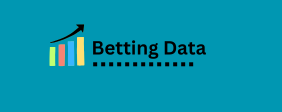It’s undeniable that the pandemic has gotten most of us thinking about the future and what it might look like. Maybe it’s our collective desire to put this all behind us or perhaps it’s the realization that a lot of the things we naturalized in pre-pandemic country email list times just don’t work anymore. Be that as it may, we’ve seen a lot of discussions about the future throughout 2021 and we’ll likely see many more as we pivot towards a new normal.
What’s Web3?
Basically, Web3 refers to the third “iteration” of the internet, which implies a different approach to how we build and share contents online. Web3 hints towards a paradigm change, similar to the 2 that came before it.
The first iteration of the World Wide how to get educator certification Web came in during the 90s when websites were mostly static and interaction was mostly non-existent. Back then, people could only access a site to read and browse through its minimal contents (which were mostly texts and very few low-resolution graphics). We can see that internet as the Web1.
The Long Road Ahead
As interesting as Web3 might sound, the reality is that we’re still far from widespread implementation. In a sense, Web3 has to face the same challenges that the metaverse will have to tackle. In other words, the new iteration of the internet will have to build and scale the necessary infrastructure to exist. There’s also the connection logistics and the agreements over web protocols and rules to govern any existing smart contract.
The metaverse overlaps
Web3 in one crucial aspect: the possibility brazil data to move inside the internet with one single identity. In the metaverse, your avatar would have to stay the same and keep its traits wherever it goes, be that a Facebook digital lounge, an online casino, or a concert held by your favorite band. Web3 promises such an ability, as the identity remains with each user instead of “living” on a third-party server (like it happens today when users have multiple profiles across websites and platforms).
